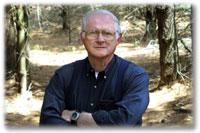The Demise of the School of the Arts
An old
friend left us this past week. The more than 50-year old School of the
Arts held each year in Rhinelander, WI and sponsored by the University of
Wisconsin-Madison, is no more. Robert E. Gard was largely responsible for
starting the school. Bob’s philosophy was—the arts are for
everyone. No matter what your income level, where you lived, or how much
formal education you had.
I
attended classes there in the 1960s when I had the opportunity to learn from
Bob Gard. I participated in a fiction writing workshop with August Derleth, and
learned basic skills about writing a novel that have proved invaluable.
And much more.
Then in
1971, Bob Gard asked me to teach at the School of the Arts. I did this
for 32 years. It was there that I met such national writing figures as
Archibald McLeash (three Pulitzer prizes), Dale Wasserman, Henry Mark Petrakis,
Studs Terkel, Robert Bly and Jesse Stuart, all writers of considerable note.
All of whom taught workshops.
But now
the School of the Arts is dead. Many of us are mourning.
Mark
Lefebvre, longtime friend of Robert Gard, said this about the school’s passing:
Learning about the demise of the School of the Arts is
hard. I broke down and cried. I thought of the many summers I spent
with Bob at the School of the Arts. I think of all the people whose lives
were awakened.
I think
of the extraordinary faculty who in that very special place made real magic
happen. Bob taught me so much, most of all, how the unexpected can happen
through simple belief. I am so disappointed these days with the
University of Wisconsin. Belief is no longer part of its
vocabulary. No greater writer than Archibald MacLeish came to
Rhinelander one summer. A sophisticated guy. He could not believe
the world he had entered. Imagine these "students" being
exposed to this man who could not thank Robert E. Gard enough for putting him so
close to the creative process.
Long may the banner of
The School of the Arts wave over the
battlefields of ignorance!
THE OLD TIMER SAYS: The arts make a life
worth living.
